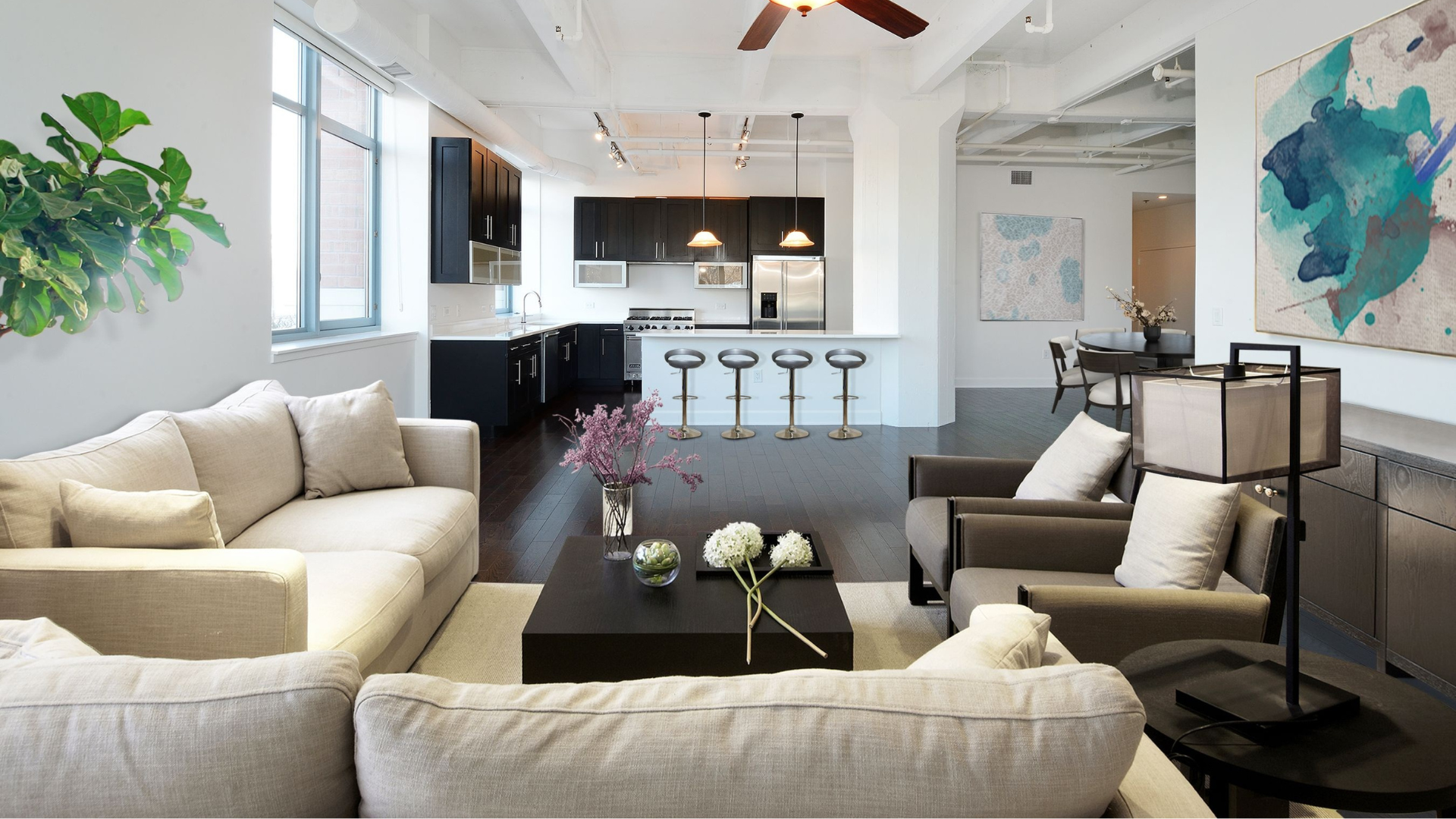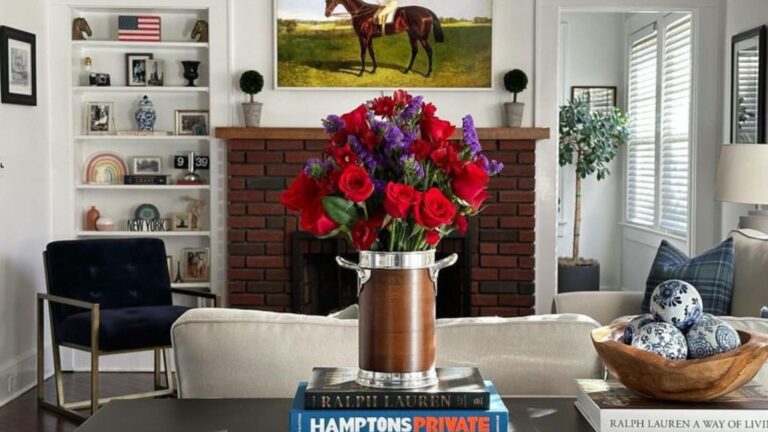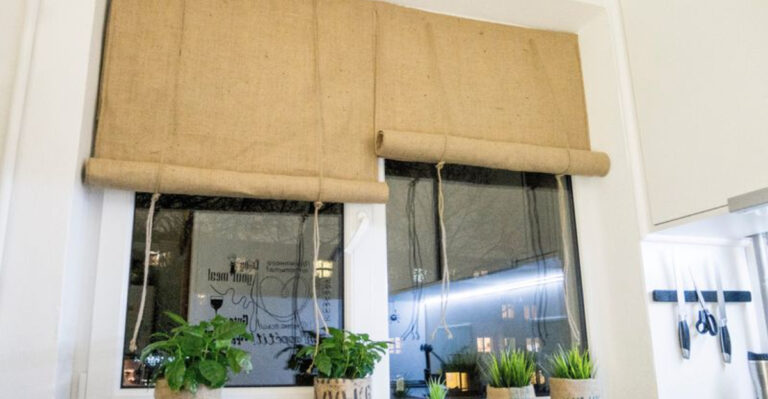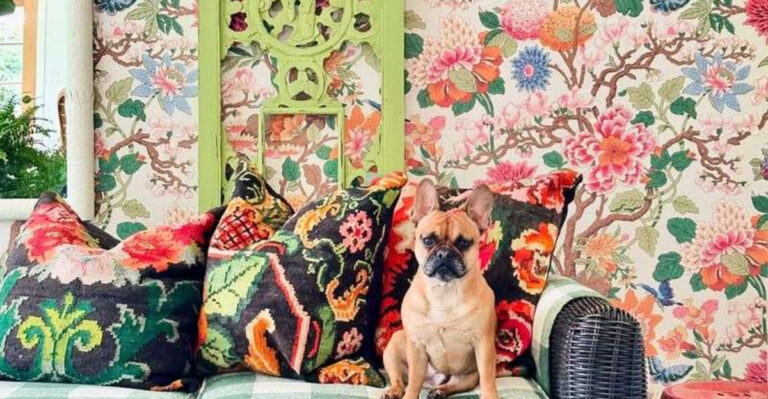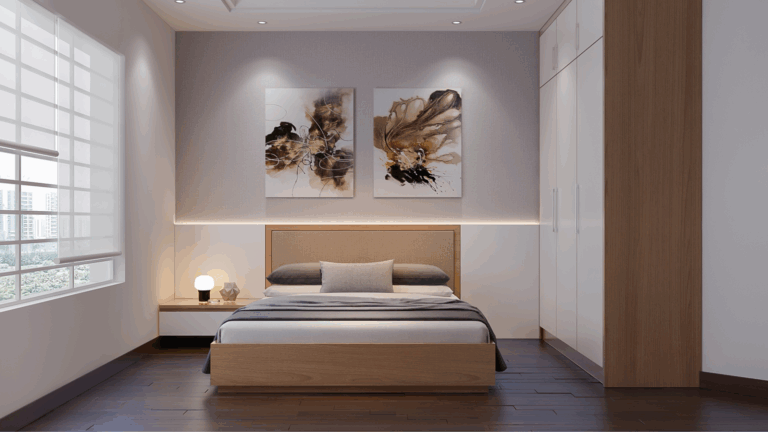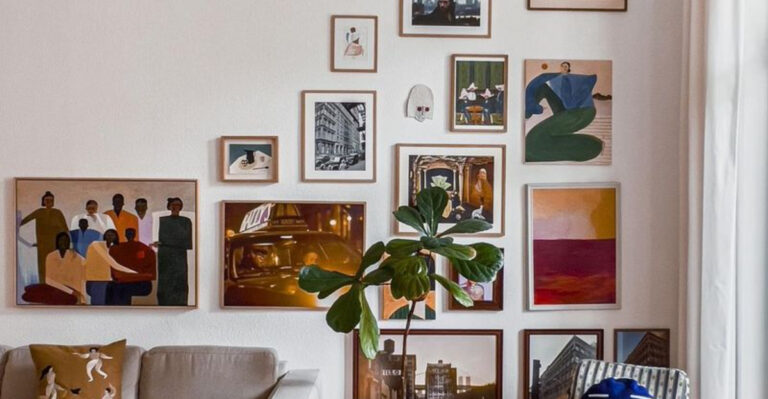I Decorated Two Connecting Rooms (Here’s What I Learned)
Bringing together different design styles can be tricky, but with the right approach, it’s definitely possible, and even rewarding.
Instead of letting your space feel like a clash between retro charm and modern simplicity, there are ways to help those styles work together. We’ll walk through seventeen practical tips to create a sense of balance between contrasting looks.
Whether you’re just starting to explore interior design or have a few projects under your belt, these ideas can help you blend styles in a way that feels natural, cohesive, and uniquely yours.
1. Consistent Color Palette
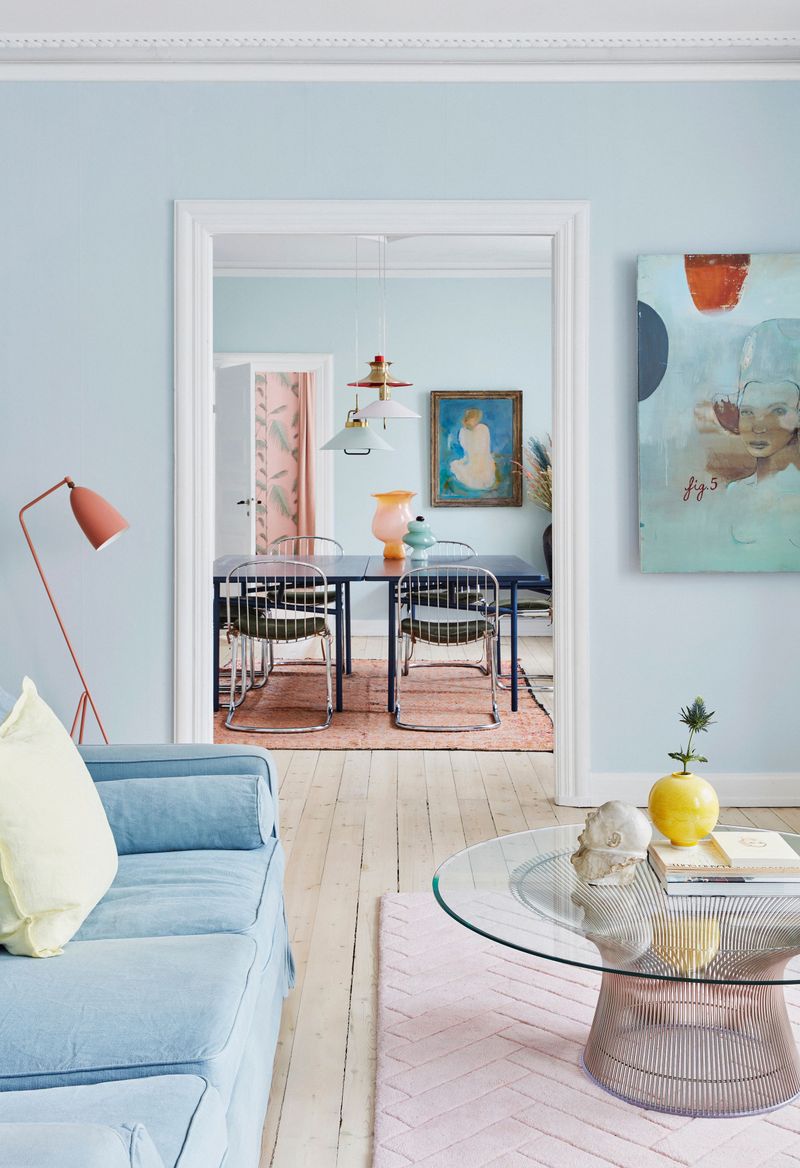
Ever tried playing matchmaker with colors that don’t quite get along? Picture a splash of mustard yellow here, a dash of teal there, it’s like a vintage cocktail party where everyone’s invited.
By choosing a consistent color palette, you’re the maestro orchestrating a symphony of hues. Each color complements another, creating a visual dialogue between your schemes.
Imagine your space singing in harmony rather than clashing in chaos. Sometimes, all it takes is a shared color tone to bring peace to your decor wars.
2. Coordinated Accent Colors
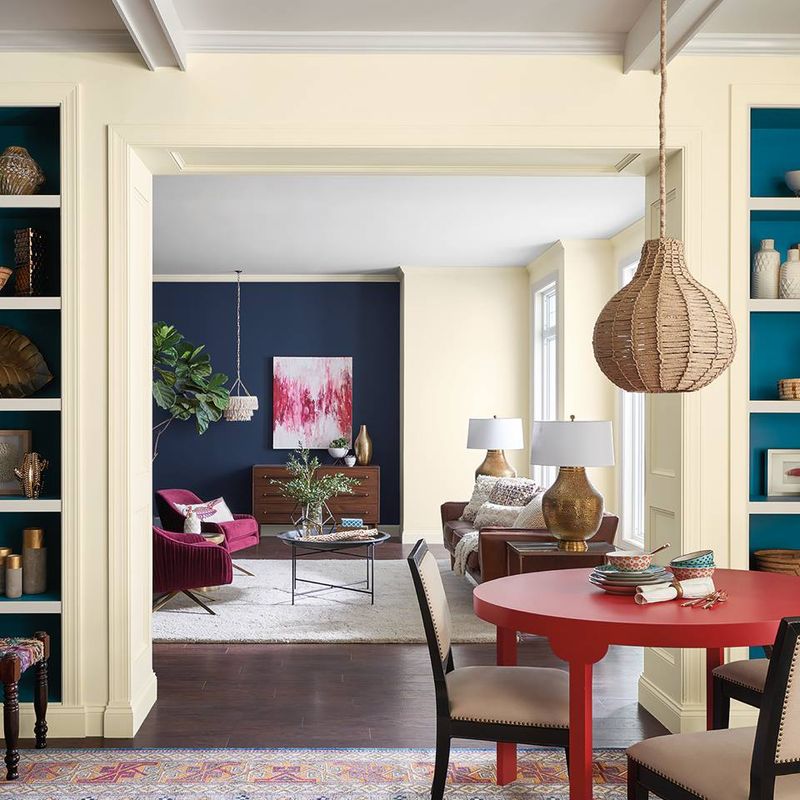
If colors were words, accent colors would be the emojis punctuating your decor sentences. They add flair, fun, and a pinch of personality.
Coordinated accent colors are like the surprise guests who turn a dull party into a vibrant bash. They bridge the gap between conflicting styles, creating a sense of unity.
Your room becomes a conversation starter, where each accent color speaks volumes about your eclectic taste.
3. Matching Textures
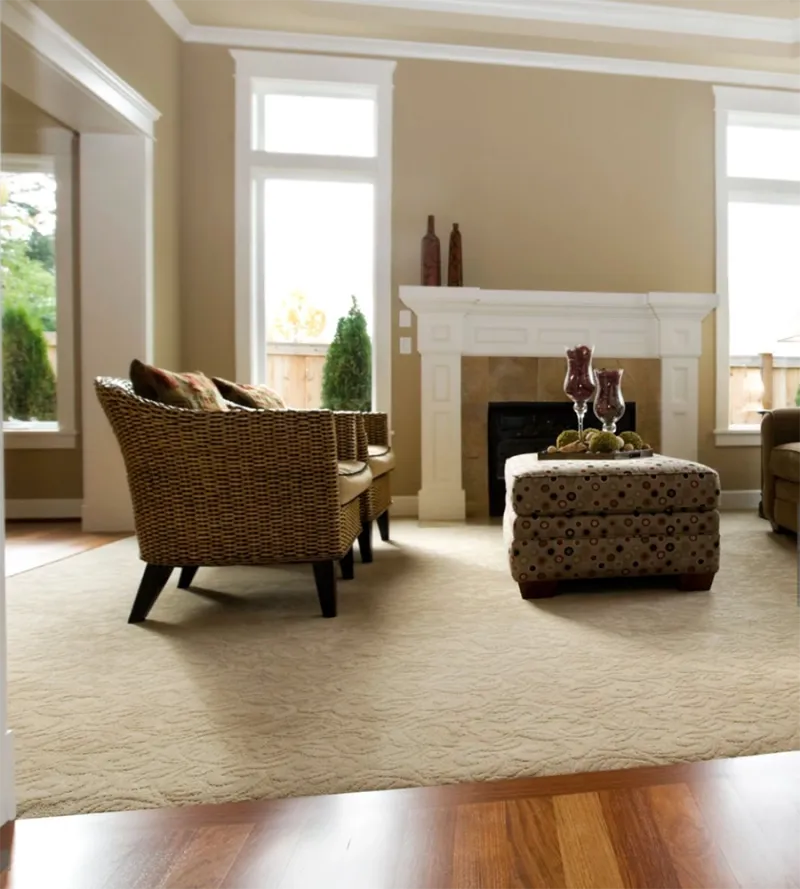
Oh, the feel of textures under your fingertips! Matching textures create a tactile tapestry that unites disparate styles.
Think of combining the velvet smoothness of a vintage couch with the rustic roughness of a reclaimed wood table. It’s like a sensory journey through your living space.
Textures can add depth and interest, making the room feel alive. Sometimes, it’s not just about what you see but what you feel. Dive into the delightful world of textures, and let your fingers do the talking.
4. Shared Materials
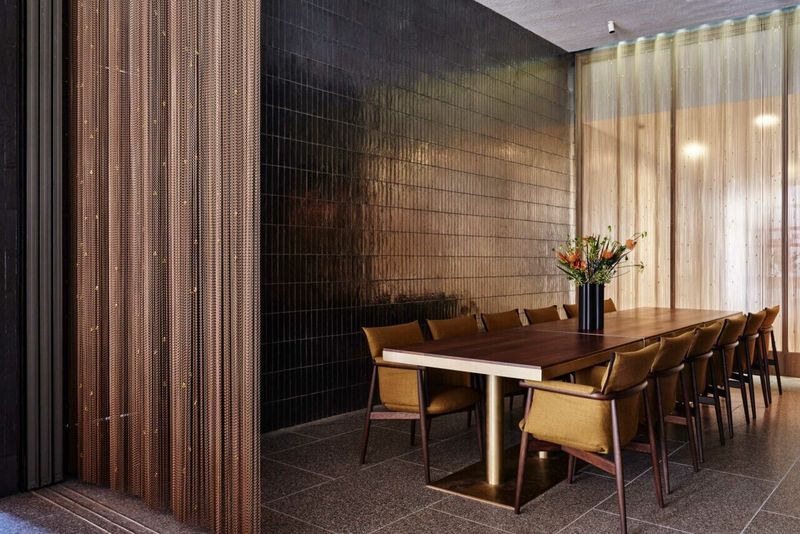
Materials are the foundation of your decor, setting the tone for the entire room. When different styles share common materials, it creates a natural connection that ties everything together.
These materials, whether metal, wood, or glass, create a visual link that unites different elements in your space.
Embrace the power of these materials to create harmony and watch your room come alive with a perfect balance of texture and style.
5. Unifying Artwork

Imagine a gallery wall where abstract meets classic, and modern speaks with traditional. Art can be the common thread weaving through the fabric of your home’s design.
It tells stories that resonate with different styles, creating a dialogue of creativity. Whether it’s a bold modern piece or a gentle landscape, the right artwork can bridge the gap, inviting conversation and contemplation.
6. Complementary Furniture Styles
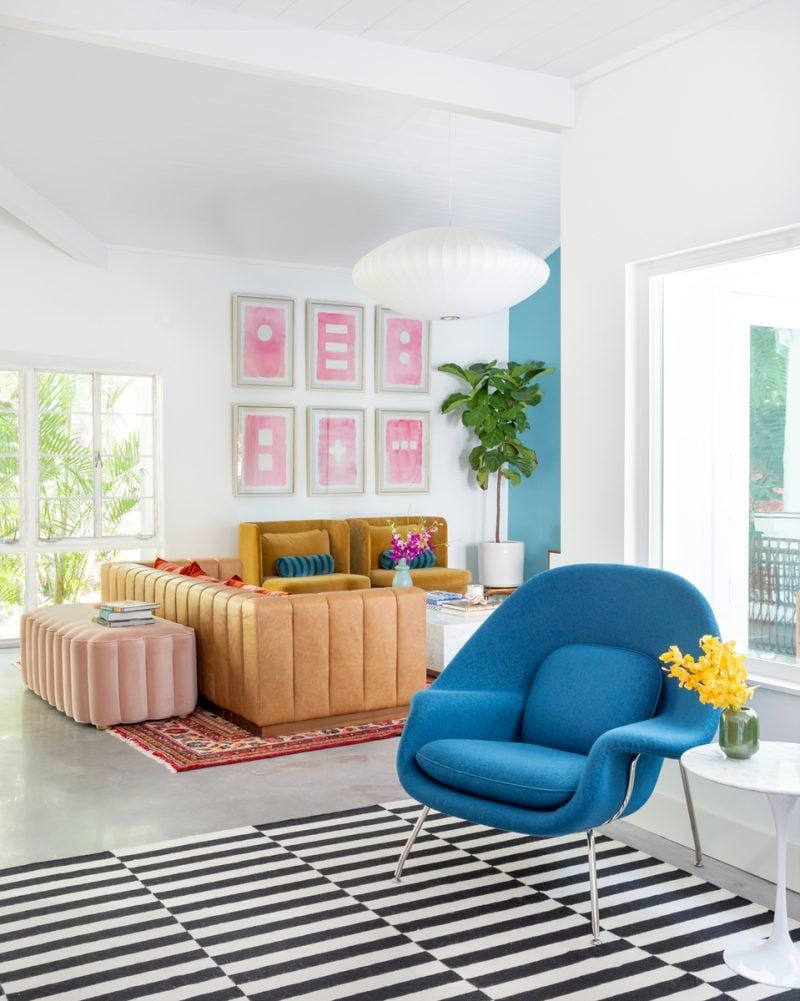
When it comes to furniture, opposites really do attract. Combining different styles can work wonders, creating a space that feels both unique and cohesive.
Now, a sleek modern sofa paired with a retro mid-century armchair together bring out the best in each other. The key is balance, making sure each piece adds to the room’s overall vibe without competing.
Embrace this mix of styles, and suddenly, every chair, table, and cabinet becomes part of a greater story, creating a room that feels both dynamic and united.
7. Transitional Lighting Fixtures
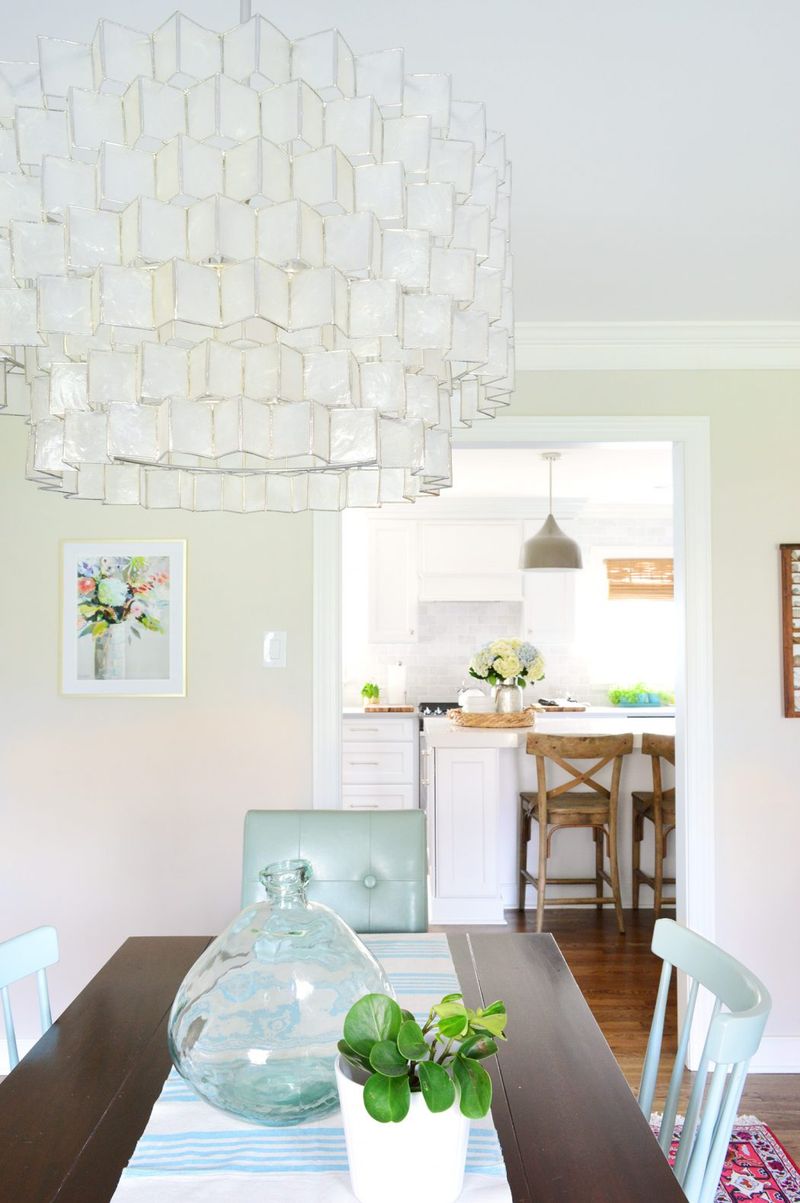
The right lighting can do wonders for a room. With a carefully chosen fixture, you can create warmth that ties together all the different elements in your space.
Even a simple change in lighting can reveal new layers, casting intriguing shadows and highlighting key details.
Whether you’re aiming for bold drama or soft ambiance, lighting has the power to elevate your decor. Let it guide your design, making your room feel more cohesive, welcoming, and beautifully balanced.
8. Common Decorative Motifs
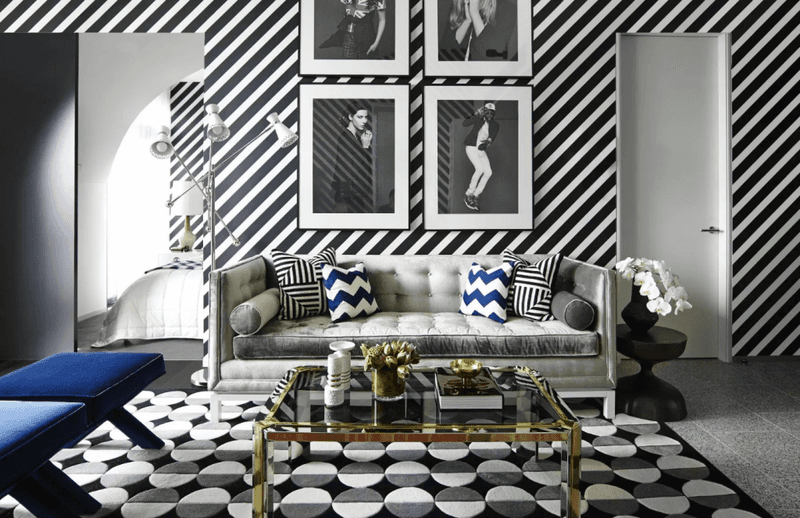
Whether it’s a floral, geometric, or abstract pattern, these repeating designs create a visual language that speaks across styles.
These motifs connect the dots between different elements, making everything feel intentional.
Embrace them, and watch your room transform into a balanced, unified space that flows naturally, no matter how diverse your decor might be.
9. Matching Rugs
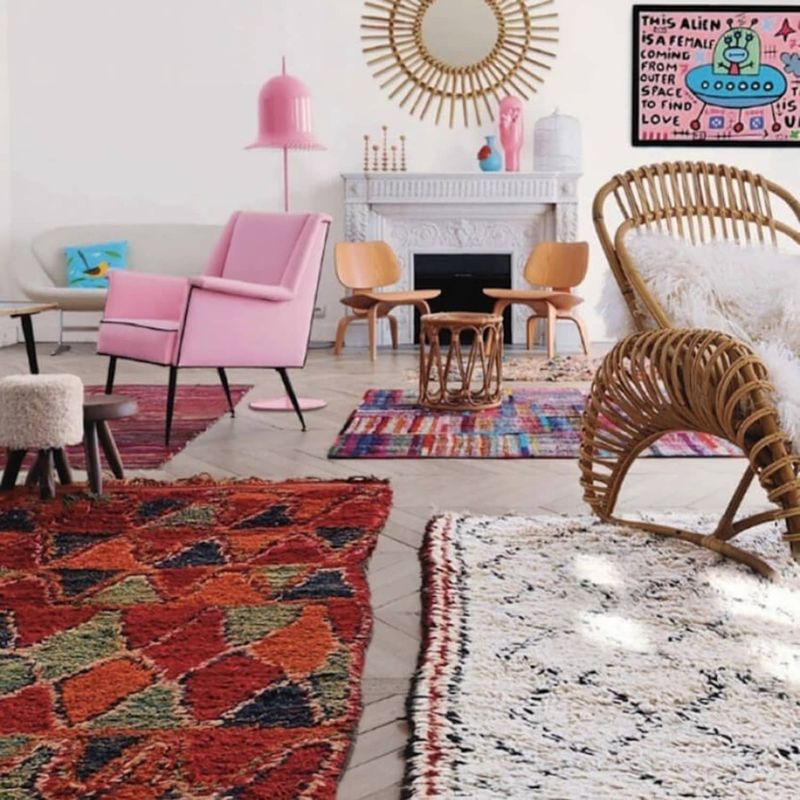
By choosing rugs that complement each other, you can effortlessly tie together contrasting design elements.
For instance, imagine a plush oriental rug beneath sleek modern furniture. An unexpected yet perfect mix of tradition and innovation. These rugs create a visual flow, easing the transition between styles.
When you find the right one, it’s like everything in the room falls into place. Step onto a well-chosen rug, and suddenly, the room feels complete and harmonious.
10. Color-Linked Curtains
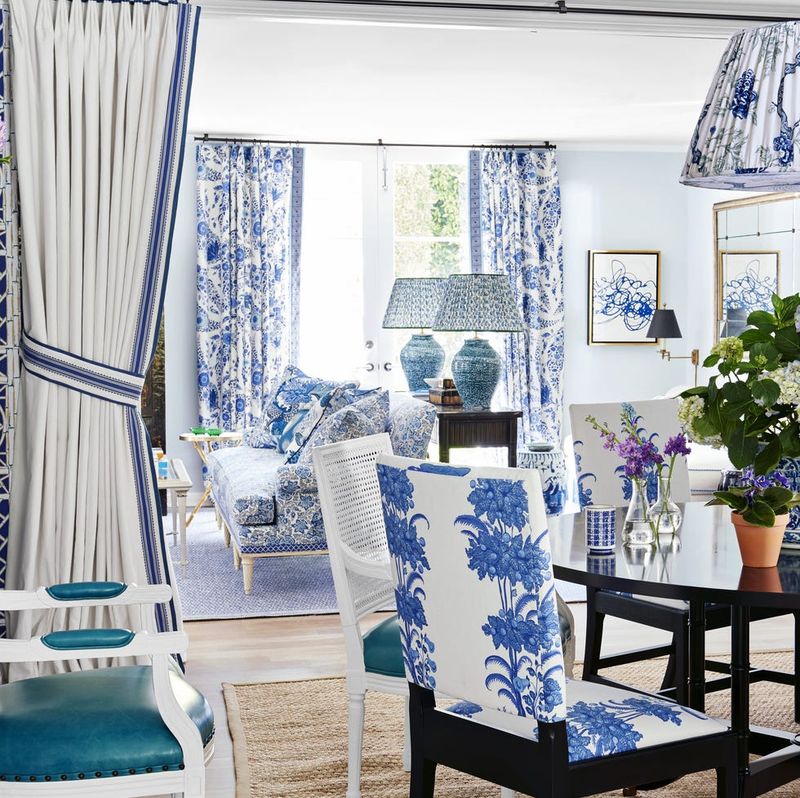
Think of them as a soft thread weaving together different styles. When curtains match the colors in your furniture or decor, they tie everything together effortlessly.
Imagine silky drapes that complement your eclectic mix, creating a smooth flow throughout the space. They not only frame your windows but also help create harmony.
A well-chosen curtain color can transform a mismatched room into a serene, balanced space, bringing everything into beautiful alignment.
11. Similar Wood Finishes
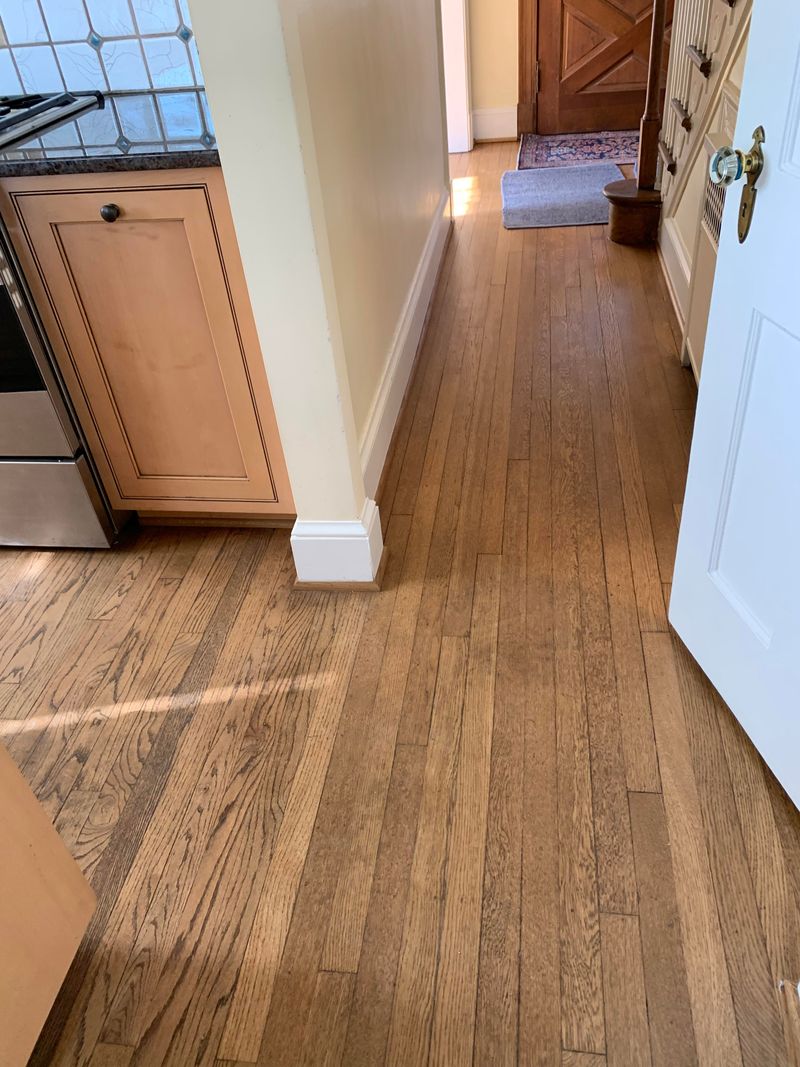
When you use similar wood tones across different pieces, they create a quiet, cohesive link between styles.
Imagine a dining room where a rustic farmhouse table and sleek modern chairs all share the same rich oak finish. It’s like everyone is speaking the same language.
These finishes bring everything together, gently tying diverse elements into a unified space. It’s a simple way to create harmony and make your room feel complete.
12. Coordinated Wall Treatments
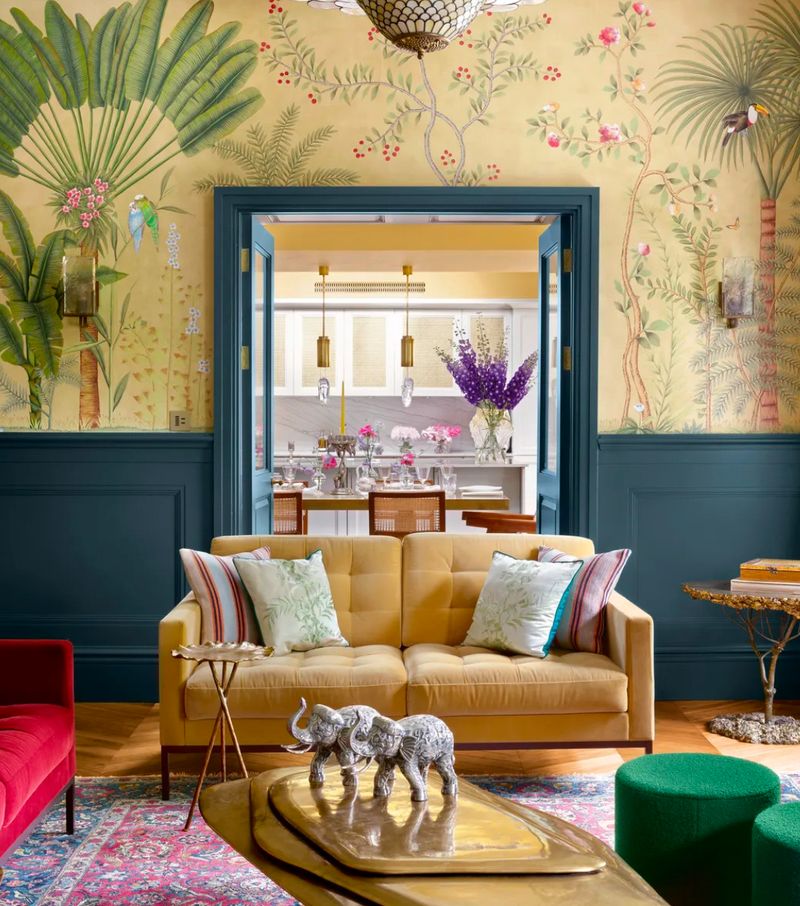
Walls are the canvases of your home, offering endless opportunities for creativity. Imagine a hallway where classic paneling meets modern wallpaper.
These treatments tell a story, sharing secrets between styles and inviting the eye to explore.
Whether it’s texture, color, or pattern, the right wall treatment can bridge the stylistic divide, transforming your space into a harmonious masterpiece.
13. Consistent Decorative Accents
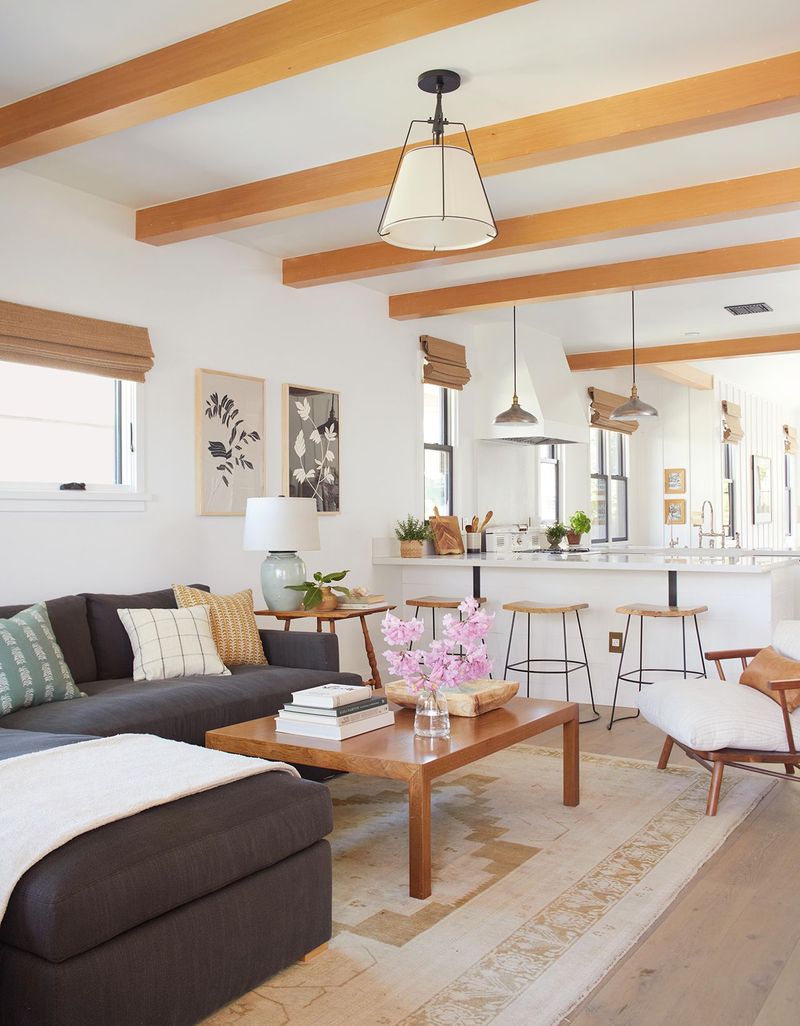
Imagine a living room where traditional and bohemian elements coexist, linked by consistent gold accents. These accents are the threads that weave through your decor, offering a touch of elegance and unity.
They whisper stories of connection, showing that even the most contrasting styles can find common ground. Embrace the magic of accents, and let them tell your home’s unique story.
14. Connected Ceilings
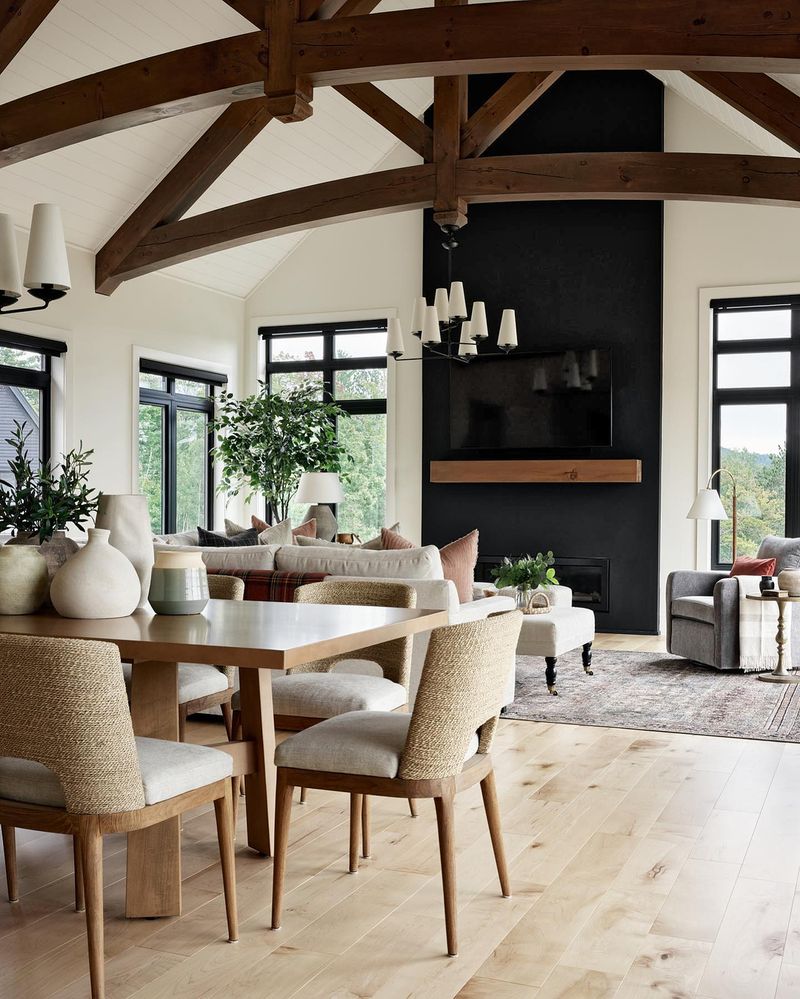
Often overlooked, your ceiling has the power to connect different design styles in a subtle yet impactful way.
Picture rustic beams paired with sleek, modern lighting. A perfect blend of old and new that catches the eye. These ceilings guide your gaze upward, creating a sense of unity and flow throughout the room.
Acting as quiet storytellers, they effortlessly bridge the gap between contrasting elements. So, next time you look up, remember: your ceiling is more than just an overhead feature.
15. Harmonizing Shapes and Silhouettes
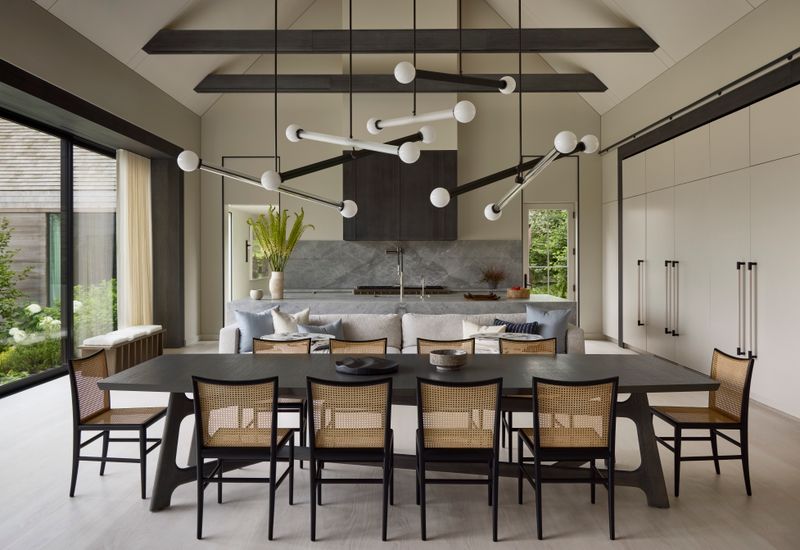
Harmonizing shapes can bridge the gap between clashing styles, creating a visual symphony. Imagine a room where curved lines meet angular edges.
These shapes speak a language of unity, offering a gentle nudge toward harmony. Whether it’s a rounded chair or a geometric lamp, the right shapes can transform your space into a seamless blend of styles.
Embrace the power of form and let it guide your design journey.
16. Cross-Room Statement Pieces
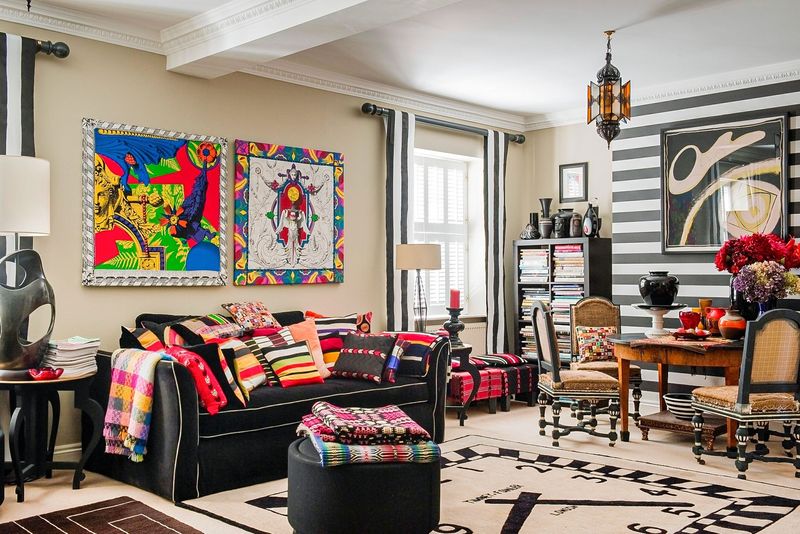
Whether it’s a unique art piece or a standout piece of furniture, it has the power to bring harmony where there might otherwise be contrast.
These items act as the heart of the space, creating a shared vibe that speaks to every corner of the room.
Think of them as your home’s storytellers, uniting diverse elements and creating a seamless flow. Let your statement pieces set the tone and bring everything together with style.

